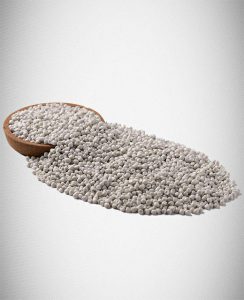You can send us your request according to the technical specifications and application and the amount of supply per month so that our experts will respond to you as soon as possible.
| Chemical Formula | (C3H6)n |
| Partially Crystalline | Polypropylene exhibits both crystalline and amorphous regions within its molecular structure. |
| Crystalline Regions | Highly ordered and tightly packed. |
| Amorphous Regions | Disordered and loosely packed. |
| Similar to Polyethylene (PE) | Polypropylene shares some properties with PE. But it is slightly harder and provides higher heat resistance. |
Types of Polypropylene (PP) Granules
1. Polypropylene Homopolymer
 PP Homopolymer is the most widely used general-purpose grade. It contains only propylene monomer.
PP Homopolymer is the most widely used general-purpose grade. It contains only propylene monomer.
- Applications: packaging, textiles, healthcare, pipes, automotive, electrical.
2. Polypropylene Copolymer
PP Copolymer is produced by polymerizing propene and ethane. Its subtypes are random copolymers and block copolymers.
3. Polypropylene Impact Copolymer
PP Impact Copolymer contains a co-mixed PP Random Copolymer phase. Its Ethylene content is 45-65%. Applications: packaging, houseware, film, pipe, automotive, electrical.
4. Expanded Polypropylene (EPP)
EPP is a closed-cell bead foam with ultra-low density. Its features are a higher strength-to-weight ratio, excellent impact resistance, thermal insulation, and chemical and water resistance. Applications: automobiles, packaging, construction products, consumer goods.
5. Polypropylene Terpolymer
PP Terpolymer is composed of propylene segments joined by monomers ethylene and butane. It offers better transparency than the PP homopolymer. It is suitable for sealing film applications.
6. Polypropylene High Melt Strength (HMS)
HMS is a long chain-branched material with high melt strength and extensibility. Its features include a wide mechanical property range, high heat stability, and good chemical resistance. Applications: soft, low-density foams for food packaging, automotive, construction.
7. Bio-based Polypropylene
It is a bio-based version of PP derived from renewable feedstocks. Its Bio-based content varies from 30-100%. Applications: various grades are available for different applications, including food packaging, automotive, and construction.

